All is not well in Spain these days, with a grim financial situation and unemployment levels hovering around 20%. Nevertheless, two trips during the past five months have shown me that Spain remains as full of sunshine as ever--literally but also metaphorically--thanks to the resiliency and joie de vivre (or maybe alegria de la vida) of the Spanish people. Certainly it helped to win soccer’s World Cup and see Rafael Nadal win three Grand Slam tennis titles during the summer, but we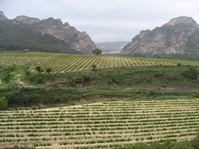 should add to our list of bright spots the fact that Rioja, Spain’s most important wine region, is again at the very top of its game.
should add to our list of bright spots the fact that Rioja, Spain’s most important wine region, is again at the very top of its game.
Let’s get specific about what that means. First, there has never been as much excellent red wine from Rioja on the market as there is right now. Second, the high tide of excellent reds is the result of some superb vintages but also of more lasting stylistic improvements that bode well for the future. And third, continuing economic difficulties in Spain and around the world have softened many prices and eased availability for many allocated wines, making the present moment look like a sort of Golden Age for lovers of Rioja.
The excellence of current release reds was underlined for me two 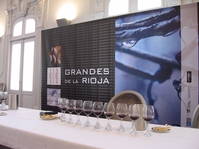 weeks ago during a series of bodega visits and extensive formal tastings called Grandes de la Rioja and conducted under the auspices of the government of the province of La Rioja. You’ll find my recommendations below of the best wines that I tasted.
weeks ago during a series of bodega visits and extensive formal tastings called Grandes de la Rioja and conducted under the auspices of the government of the province of La Rioja. You’ll find my recommendations below of the best wines that I tasted.
With regard to recent stylistic shifts, a little background is in order. In my view, during the late 1980s and through the 1990s, Rioja let other Spanish regions steal its thunder due to a complacent sense of entitlement. As other regions were questioning their traditions and straining to achieve greatness during the past two decades, Rioja tended to rest on its laurels. As the rest of Spain redoubled its efforts to improve fruit quality in vineyards, Rioja remained overly reliant on its barrels for character and complexity. 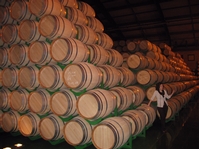 Showing something like an aristocrat's disdain for the upstarts nipping at its heels, Rioja failed to maintain its historic position of leadership in Spanish red wine.
Showing something like an aristocrat's disdain for the upstarts nipping at its heels, Rioja failed to maintain its historic position of leadership in Spanish red wine.
Then, when Rioja finally got the message that the worldwide buzz about Spain was all about Priorat, Ribera del Duero, Rias Baixas and Toro, it freaked out and over-reacted. Many producers devoted their energies to producing "high-expression" flagship wines that would be as dark and dense as wines from warmer regions, and sought to outdo one another in how heavy they could make their bottles and how high they could raise their prices.
Many of these wines were actually quite impressive, but they represented only a tiny fraction of total production, and did nothing to address the fact that Rioja's bread-and-butter wines (Crianzas and Reservas) were taking a beating from fresher, purer, richer wines from Ribera del Duero, Toro, Montsant and other regions on the rise.
In my opinion, the emphasis on “high-expression” wines in the late 1990s was a bit like responding to a dog attacking one's leg by straightening one's necktie.
Stylistic shifts began to appear in a fairly widespread way around the turn of the millennium, though uneven pacing suggested that the region as a whole remained in disarray. Some producers were still stuck in denial about the outmoded nature of wines that strike the rest of the world as thin, over-oaked, and oxidized. Others had cut bait entirely on tradition, achieving greater freshness and depth of flavor, but doing so at the cost of the spicy, leathery complexities that have made Rioja distinctive for over a century. However, many producers have now settled onto a moderate and reasonable middle ground in stylistic terms. For example, many Crianzas made in 2004, 2005 and 2006 are 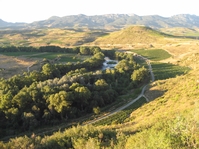 notably more restrained in terms of oak--on average--than were their counterparts from, say, 1998 and 1999 at a comparable stage of development. This is also true of the Reservas from 2004 and 2005 by comparison to earlier renditions.
notably more restrained in terms of oak--on average--than were their counterparts from, say, 1998 and 1999 at a comparable stage of development. This is also true of the Reservas from 2004 and 2005 by comparison to earlier renditions.
In terms of ripeness and weight, the current release wines are a little plumper and fruitier than those of the past, but rarely show a chunky character or over-ripe notes that I saw in a fair number of wines six or seven years ago. My sense is that a consensus is emerging to the effect that Rioja's wines need to be somewhat riper and more concentrated than has been the norm since the 1970s if they are to hold their own in the contemporary world market. However, I also get the sense that Rioja producers have come to terms with the fact that their wines will--if ripened in a balanced way--remain lighter than Ribera del Duero or Toro wines, and will have to compete on grounds of complexity rather than sheer power.
All of these developments bode well for Rioja’s future. Economic woes within and beyond Spain will surely mean that some bodegas will close or be bought up by others, but a shakeout is probably not the worst thing that could happen to the region if one takes a broad and long-term view. Of course, such a view tends to lose sight of the pain inflicted on particular individuals during such a shakeout, but even that is counterbalanced to some degree by the advantages now being enjoyed by consumers.
With more than 157,000 acres currently in production, Rioja produces a hell of a lot of wine, and not all of it is currently getting sold, with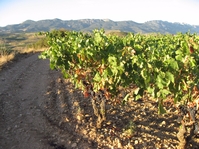 predictable effects on prices. During the past few months I have found--and purchased--Crianzas from major bodegas for as little as $7, which is a retail price that is lower than the wholesale price of the same wines two years ago.
predictable effects on prices. During the past few months I have found--and purchased--Crianzas from major bodegas for as little as $7, which is a retail price that is lower than the wholesale price of the same wines two years ago.
I live in the ultra-competitive Washington, D.C. market, so you may not readily see bargains like that in your area. However, you can still get great deals and also get a sense of the softness of current prices by looking up particular wines on a website like winesearcher.com. You’ll see that some retailers are able to sell highly desirable Riojas for dramatically less than the prices being asked by other retailers, which is a clear indication of a happy fact for consumers: Wines are stuck in the pipeline with new vintages stacking up in Spain, and certain importers and distributors are opening spigots in order to relieve the pressure.
Which wines should you check on? You’ll see recommendations for some amazing wines below, but in general terms, the vintages to seek out are 2005, 2004 and 2001. Red wines from vintages as recent as 2008 or 2009 are already on the market, but 2001, 2004 and 2005 were better growing seasons, and that quality differential is magnified by the additional time that these wines have had to mature in bottle. If you want to get really specific, it is now clear to me that 2001 was not only the best vintage in relatively recent years, but the great vintage of an entire generation, eclipsing every other year back to 1973 or 1964. Many of the best wines from 2001 are now cleared from markets, but a surprising number are still available, and a few Gran Reservas are just now being released. If you have a piggy bank and a hammer, this would be a good time to introduce them.
Grandes de la Rioja was a four-day international press event showcasing top bodegas and more than 130 particular wines thought to  be among the very best made in that portion of the Rioja appellation lying within the political jurisdiction of the province of La Rioja. Since officials in Navarra and the Basque country didn’t opt in with resources to support the event, it didn’t include bodegas from the portion of the appellation that lie in Navarra or in the even-more-important Basque area of Rioja Alavesa. Consequently, some important bodegas didn’t get to play, but nevertheless you’ll find a lot of fantastic wines below. Roughly half are already available in the USA, and most of the others will arrive during the next few months. I’ve included rough pricing for some of the wines that have already arrived, but please be aware that retail prices vary widely at the moment:
be among the very best made in that portion of the Rioja appellation lying within the political jurisdiction of the province of La Rioja. Since officials in Navarra and the Basque country didn’t opt in with resources to support the event, it didn’t include bodegas from the portion of the appellation that lie in Navarra or in the even-more-important Basque area of Rioja Alavesa. Consequently, some important bodegas didn’t get to play, but nevertheless you’ll find a lot of fantastic wines below. Roughly half are already available in the USA, and most of the others will arrive during the next few months. I’ve included rough pricing for some of the wines that have already arrived, but please be aware that retail prices vary widely at the moment:
Roda “Cirsion” 2007, 100% Tempranillo: Exceedingly concentrated and dense, this is a very expensive (around $300), limited release, “statement wine” of a sort that I often disapprove of on multiple grounds. But this release rocks. It is packed with everything--fruit, wood, acidity and tannin, yet the proportions are pleasingly symmetrical, and the fruit has already soaked up much of the wood and effectively buffers the tannin. The predominant notes are black fruit, spices, woodsmoke and rosemary. This could be enjoyed now with a grilled steak or aged cheese, but the smart thing to do with it is to wait for at least five years to enable aromatic complexity to develop to a level commensurate with the whopping fruit. 97
Muga Gran Reserva “Prado Enea” 2001 ($60): Muga makes both modern and more traditional-style wines, and this is a traditional Gran Reserva made with great skill from exceptional material. Comprised of 80% Tempranillo along with another 20% made up from unspecified percentages of Mazuelo, Graciano and Garnacha, it shows a gorgeous bouquet with lots of sweet fruit accented with lovely notes of spices, subtle vanilla bean, leather, and smoke. Despite a legal minimum of 24 months in oak, the palate remains sweet and soft, with no evidence of drying all the way through a very long finish. Already extremely complex, this is certainly not played out, and additional development can be enjoyed by anyone who has the superhuman patience required to resist drinking it immediately. 95
Muga “Aro” 2005 ($175): A blend of 70% Tempranillo and 30% Graciano, this is a big, brash, powerful wine that is almost black in color, with massive fruit and an equally prodigious dose of spicy oak. Minty notes of eucalyptus show prominently on the nose, with a peppery accent note showing in the finish. This is built for the long haul, and though it needs another five years to really show its stuff, there’s not much suspense about the outcome, which will be fantastic. 94+
Marques de Murrieta Gran Reserva “Castillo Ygay” 2001 ($50, MMD): Built from 93%Tempranillo and 7% Mazuelo, this shows extremely impressive balance between the muscular modern style and the leaner, lighter, more nuanced traditional style. The fruit recalls both dried cherries and fresh ones as well, with lots of spicy backnotes but virtually no smoky character. The wood is very subtle, but there’s lots of very fine-grained tannin that is in essentially perfect balance with the sweet fruit. A terrific wine that still has another five years of positive development ahead of it. 94+
Sierra Cantabria “Amancio” 2006: Made entirely from Tempranillo 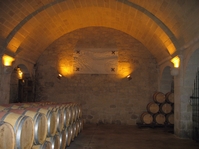 and weighing in at 14.5% alcohol, this shows a big wave of vanilla and woodsmoke on the nose, with lots of smoky oak asserting itself on the midpalate and again in the finish. However, the dark, dense, deeply flavored fruit is clearly up to the challenge of counterbalancing the influence of all of that wood, and the notes of dark cherry liqueur, blackberry and red plum are very appealing. Despite the sheer massiveness of the fruit and all the oak, this wine manages to convey a sense of naturalness and purity that is extremely impressive, presaging an enduring balance as it ages and gains additional complexity. 94+
and weighing in at 14.5% alcohol, this shows a big wave of vanilla and woodsmoke on the nose, with lots of smoky oak asserting itself on the midpalate and again in the finish. However, the dark, dense, deeply flavored fruit is clearly up to the challenge of counterbalancing the influence of all of that wood, and the notes of dark cherry liqueur, blackberry and red plum are very appealing. Despite the sheer massiveness of the fruit and all the oak, this wine manages to convey a sense of naturalness and purity that is extremely impressive, presaging an enduring balance as it ages and gains additional complexity. 94+
Marqués de Cáceres Reserva “Gaudium” 2004: Comprised of 95% Tempranillo and 5% Graciano, this is the best rendition of this wine that I’ve ever tasted, and in my experience few wines from the 2004 vintage are quite the equal of their counterpart bottlings from 2001. More concentrated than past bottlings of Gaudium, this nevertheless shows a lovely purity to the sweet fruit, and the wine is very sensibly extracted, suggesting that it gained its sheer size from very low fruit yield rather than aggressive maceration. Notes of black and red cherries are roughly equal in prominence, and the spicy, smoky accents are very well tuned to the fruit. The oak is deftly balanced, leaving the wine seeming rounded and soft but still focused and framed. 94
Lan “Edición Limitada” 2006: Made from 80% Tempranillo and 10% each of Mazuelo and Graciano, this is usually priced notably lower than most of the other wines near the top of this list. It is very, very dark and deeply pigmented, but with some tenderness in textural terms and a sweetness that buffers the wood and extract right through the finish. If you tasted this blind, you’d be hard pressed to guess that this was from Rioja rather than Ribera del Duero or Toro, though there’s a freshness to it that faintly betrays a cooler climate origin. Certainly very impressive, this is a wine that doesn’t require a lot of guesswork, as it is already very appealing if definitely not yet anywhere near its apogee. 94
Marqués de Murrieta Reserva “Dalmau” 2005: It is not easy to understand why the Cabernet shows so prominently in this wine, which is reportedly made from 92% Tempranillo, 4% Graciano and 4% Cabernet Sauvignon. The finished product tastes like a New World wine, albeit a very classy and delicious one. Very dark and concentrated, but with no hint of over-extraction, this shows a rich, meaty character with suggestions of dark cherries, black plums, and lots of toasty oak. A formidable wine. 94
Señorio de San Vicente “San Vicente” 2006 ($55): Crafted entirely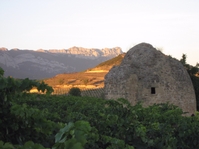 from Tempranillo and checking in at 14.5% alcohol, this is quite dark in color for a four year-old wine, but more reasonably pigmented around the edges in terms of saturation. Pure aromas and flavors over-ride the oak, which is balanced and sensible. Definitely an intense wine, but symmetrical and very promising while already being very enjoyable. 93
from Tempranillo and checking in at 14.5% alcohol, this is quite dark in color for a four year-old wine, but more reasonably pigmented around the edges in terms of saturation. Pure aromas and flavors over-ride the oak, which is balanced and sensible. Definitely an intense wine, but symmetrical and very promising while already being very enjoyable. 93
Finca Valpiedra Reserva 2005: This is a very serious but not obviously “showy” wine made from 94% Tempranillo, 3% Graciano and 3% “Experimental Varieties.” Intense and notably firm in oak, with good concentration, it is nevertheless taut and even bright, with lots of fresh acidity to let it develop gracefully for many years. Balanced and built to last, with enough sweetness to the fruit to outlast the wood and tannin and acidity. This will reward patience very handsomely. 93
Federico Paternina Gran Reserva “Conde de los Andes” 2001: A very traditional wine from the label to the style of the finished product, this is all about leather and spicebox notes in terms of aroma, with light color and quite evident oxidative development. This isn’t everyone’s idea of an excellent wine on account of its lack of weight and intensity, but open minded tasters will find it almost endlessly complex, with sweet dried cherry notes that override the wood and tannin to the end of the long finish. Most vintages don’t produce fruit that can make this sort of wine work, but 2001 was one of them, and perhaps the only one in a generation. 92
Martinez Lacuesta Gran Reserva 2004: This was the only 2004 Gran Reserva in the tastings, and it was a bloody impressive wine made from 85% Tempranillo, 10% Graciano and 5% Mazuelo. It is almost shockingly dark and intense for a Gran Reserva that spent a minimum of 24 months in oak, showing lots of primary fruit that effectively shoves the oak off of center stage--and there’s a lot of oak to shove in this case. Intense notes of dark cherries are accented with lots of spices and smoke. There’s lots of tannin to enable this to last for many years, but they are so fine in grain that they almost seem dusty in texture, and they do not dry the finish, which is always the big question about a Gran Reserva. 92
CVNE “Real de Asúa” 2004: Made entirely from Tempranillo, this is dark in color but hardly forbidding in any other respect, this is very appealing and impressive. Very well integrated and quite complex, it is nowhere near as big and pushy as most of the wines with which it was grouped, which was certainly a factor working to its disadvantage. Fresh and pure but showing secondary notes at the same time, this is medium-bodied, lifted and freshly floral and delicate, with pure red cherry with some red raspberry undertones and a hint of black cherry also. Feminine and charming, this was among the most distinctively restrained and stylish wines in the entire lineup, with an amazingly high ratio of flavor to mass. Very impressive and interesting. 92
Berceo Crianza “Los Dominios Berceo Prefiloxérico” 2005: Made entirely from Tempranillo and checking in at 14.5% alcohol, this is very concentrated, deeply flavored, intense and impressive, with restrained wood and gorgeous fruit that really persists in the finish. Meaty but subtle, with wood that is notable but well back in the mix, this is still firm but very promising. 92
Valsacro 2005: This impressive wine is blend of 60% Tempranillo, 30% Garnacha, 8% Graciano and 2% Mazuelo. It is meaty and savory, with balanced wood and restrained ripeness. Dense and dark but not over-extracted, it shows pure fruit with both dark and red notes. Not the most complex wine in the tastings, but very well integrated and immensely satisfying, with no rough edges. 92
Florentino Martinez “Tanka” 2005: Made entirely from Tempranillo, this is dense and concentrated, but ripe and soft, and hence very appealing already, with restrained oak that shows just around the edges. Very classy, and thoroughly enjoyable thanks to exceptional purity. 92
Castillo de Cuzcurrita “Cerrado del Castillo” 2005: Another very successful wine crafted entirely from Tempranillo, this is juicy and sweet and very ripe, with subtle oak and an interesting savory character. Lots of little nuances around the edges of the aromas and flavors. 91
Castillo de Mendoza Reserva 2005: All Tempranillo yet again, this is very dark, ripe and sweet, both in aroma, on the palate and in the finish. Smoke and spice are present, but mostly on nose and mostly in background. Impressively restrained and consequently quite complex. 91
Óbalo “Altino,” 2008: A debut release from a new bodega, this 100% 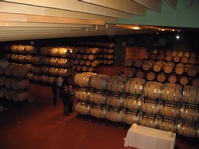 Tempranillo wine show lots of fancy, smoky French oak on top, but there’s enough sweet fruit to support the wood. Nice fine-grained tannins provide structure but don’t dry the wine, which shows good persistence in the finish. This is pushing its luck on wood, but tasted repeatedly, it comes up looking good, though it really needs a couple of years to resolve all that oak and integrate it fully with the fruit. 91
Tempranillo wine show lots of fancy, smoky French oak on top, but there’s enough sweet fruit to support the wood. Nice fine-grained tannins provide structure but don’t dry the wine, which shows good persistence in the finish. This is pushing its luck on wood, but tasted repeatedly, it comes up looking good, though it really needs a couple of years to resolve all that oak and integrate it fully with the fruit. 91
Domeco de Jarauta “Viña Marro” Crianza 2007: A top-performing Crianza made from 90% Tempranillo and 10% Graciano, this is a lovely wine that shows very skillful craftsmanship. There’s lots of ripe, soft fruit, and though softness seems what this is all about at first blush, there’s also lots of fine-grained tannins that are almost sneaky in how they focus and firm the wine without drying it or seeming overt or obtrusive. Dark in look and dense in feel, this is complete and convincing, with excellent balance showing strong fruit material and very impressive winemaking. 91
Regalia de Ollauri “Marques de Teran Edición Especial” 2007: 100% Tempranillo yet again, this is very ripe and soft, with tender textural feel and plenty of sweetness to the fruit. The only question about the wine is whether it is sufficiently defined, and several sips interspersed with tastes of other wines always produced an affirmative answer for me. Mostly black fruit notes here but there’s a bit of red fruit character as well, and thankfully, the winemaker left the fruit out front, where it shines. 91
Palacios Remondo “Propriedad” 2007: 60% Garnacha and 40% Tempranillo makes this an unusual blend, but explosive sweet red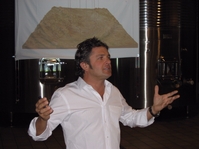 cherry aromas make the prominence of the Garnacha apparent from the first whiff. There’s also a hint of cranberry with all of that cherry, and you’d be well advised to pair this wine with a spicy meat dish or one with a bit of bitter grill charring to counterbalance all of that sweet red fruit. (Parenthetically, the Palacios Remondo “Placet Pago Valtomelloso” Blanco con Crianza 2008 was the top white wine of the tasting, and by a rather wide margin.) 91
cherry aromas make the prominence of the Garnacha apparent from the first whiff. There’s also a hint of cranberry with all of that cherry, and you’d be well advised to pair this wine with a spicy meat dish or one with a bit of bitter grill charring to counterbalance all of that sweet red fruit. (Parenthetically, the Palacios Remondo “Placet Pago Valtomelloso” Blanco con Crianza 2008 was the top white wine of the tasting, and by a rather wide margin.) 91
Nestares Eguizabal “Arzobispo Diego de Tejada 2005: This 100% Tempranillo wine shows lots of soft smoke and spice, with abundant wood tannins and a slightly grainy feel. Secondary aromas of tobacco leaf and smoked meat work very nicely with the fruit character, which recalls sweet cherry liqueur. 91
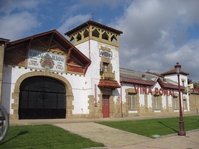 Bilbainas Reserva “Viña Pomal – Selección Centenario” 2005: A gorgeous rendition of Tempranillo, this is still quite primary in fruit character and still quite sweet, with some nice spicy oak notes around the edges to lend complexity. 91
Bilbainas Reserva “Viña Pomal – Selección Centenario” 2005: A gorgeous rendition of Tempranillo, this is still quite primary in fruit character and still quite sweet, with some nice spicy oak notes around the edges to lend complexity. 91
Sierra Cantabria Reserva 2005: Made from Tempranillo vines of 30+ years of age, this is sweet and soft yet complex rather than obvious in character. A little light, it is nevertheless fresh and feminine and delicate, with very pretty fruit and exceptional balance. 91
Berceo Gran Reserva “Gonzalo de Berceo” 2001: Made from 80% Tempranillo with the balance comprised of Graciano and Mazuelo, this shows lots of muscle for a Gran Reserva at age 9, but is still very tastefully wrought. Ripe and sweet and wearing its oak in a very classy way, it is not very flashy, but is exceptionally well integrated. Muscular and long, is still has years of positive development ahead of it, which is very impressive. 91
Sonsierra “Pagos de la Sonsierra” Reserva 2004: Comprised entirely of Tempranillo, this is tender, appealing, soft and sweet but certainly not lacking in focus or structural definition. The fruit recalls kirsch and red plums, with nice little accents of spices and balanced tannins. 90
Maetierra Dominum “Quatro Pagos” 2005: A blend of Tempranillo, Graciano and Garnacha, this is crafted in a big, dark, ripe, modern style, with black fruit notes and some red tinges. There’s plenty of oak, but the fruit remains predominant and even husky, with the wine coming off more like a Ribera del Duero than a Rioja, for better or worse. All in all, however, impressive and appealing. 90
Viñedos de Aldeanueva “Culto” 2005: An unusual blend of 60% Graciano and 40% Tempranillo, this is strikingly intense and still quite undeveloped for a wine from 2005. There’s lots of oak and tannin but the fruit over-rides both in the finish, and while this is not particularly complex yet, it is very distinctive and interesting. 90
* * *
Comments or questions? Write to me at mfranz@winereviewonline.com